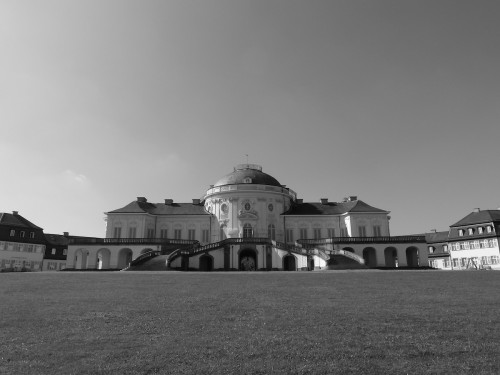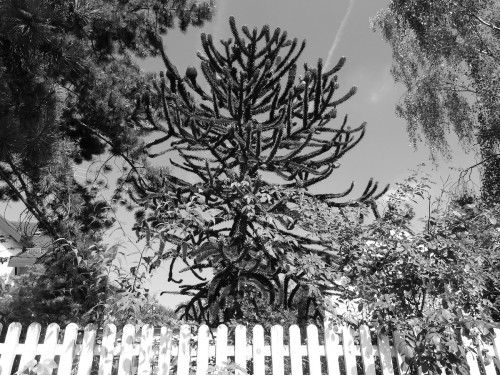Imperial Nostalgias by Joshua Edwards
 Imperial Nostalgias
Imperial Nostalgias
by Joshua Edwards
Ugly Duckling Presse, April 2013
96 pages / $15 Buy from UDP or SPD
Joshua Edwards begins Imperial Nostalgias with two short parables. One tells the story of a Traveler, another of an Outsider. The poems are immediately evocative and irresistible in the tradition of Italo Calvino and his Invisible Cities, or more recently Srikanth Reddy’s take on Dante. From there, Edwards wades into cinematic territory in a series of photos. These describe a journey through a “Valley of Unease.” We see ruins, a stray dog, and a bonfire at night.
The third section, a prose poem called “Departures,” is the strongest in the collection. The travelogue model works as a compelling framework to satirize and embrace American anxieties in “slightly foreign” lands. The poet approaches Imperial Nostalgias with clear eyes. In an interview earlier this year with the Studio One Reading Series he admitted, “Imperialism is in the cereal I eat and the culture I consume, and the ghost of Manifest Destiny looms large in the histories of the states I’ve spent most of my life in.” Like Ben Lerner’s terrific Leaving the Atocha Station, the work engages the aesthetics and the ambivalence of young Americans abroad.
Edwards works through anxieties, but he still perpetuates the myth that there is such a place as “abroad.” So while there is little talk of the cringey Tinker, Tailor, “These boys were born to empire,” type nostalgia in the collection, there is still a very clearly articulated imperialist nostalgia. This comes out in snatches,
I wake up and then drink tea, then relax
On my friends couch to watch Paris, Texas
For the first time. When someone goes silent,
Or when a siblings room is filled with sorrow,
The whole world resembles a motel room.
Edwards chooses a very particular aesthetic (He evokes French minimalists like Toussaint, art galleries, (Like Lerner, Imperial Nostalgias repeatedly returns to art museums as if too say this too is a high concept endeavor), washed out desert scenes, vague Orientalism, Paris, Texas, etc) that effectively conveys a certain moment in American (therefore world) history: 80’s independent film and Conceptual Art.
In the translation of this aesthetic, Edwards shows a drive towards the mysterious and apophatic. When Bell Hooks wrote about Imperialist Nostalgia, she focused on celebrities like Madonna, performing blackness. She employed the now well-worn “eating the Other” type analysis. But really, it’s important to remember there’s a lot of Other there (too much to eat), and in terms of nostalgia this comes out in the apophatic or the unknowable. For 80’s Conceptual Art or even Paris, Texas, the mystery deepens as it ages. And difficult to decipher social orders become conflated with truly the truly unknowable. The work of Cindy Sherman, or Vancouver School Photographers, lately much celebrated and mimicked, have taken on a sheen of romance. And this says something about conceptual photography in the 80’s and a whole lot more about the way we live now. It’s common for artists to romanticize and re-imagine the past, but this has everything to do the artist’s personal contemporary.
For artists of a certain generation Paris, Texas becomes a type of nostalgic touchstone; it represents not a time before there was American empire, but perhaps before the artist knew about American empire. The unknown swirling around Harry Dean Stanton would be a lot less unknown for an older generation of filmgoers that had seen him act in movies beginning in the 1950’s. In a recent HMTLGIANT post, Felix Bernstein imagines art “that may or may not know (symbolic order) networks exist.” Paris, Texas is a beautiful film, certainly nostalgic for great Cowboy and Noir films of an earlier era, but the complex social networks it explores (poverty in the panhandle, cold war malaise) might be different for an older artist living in Houston, for example. Recognizing the precarious position of a would be counter-cultural American artist abroad, Edwards compulsively recreates an aesthetic of the Imaginary or in-between, when the startling symbolic order networks do not exist for him, but not an aesthetic from when they did not exist. And by translating this aesthetic again and again, Edwards is free to play Cowboys and Indians.
***
Joseph Houlihan lives and works in Minneapolis, MN.
November 4th, 2013 / 11:00 am
First Study for a Long Walk: Castle to Castle
Lynn Xu and I are married, and we’re also poets. For the past year we’ve lived in an interdisciplinary residency in Germany, in a community of artists and all sorts of people we don’t usually get to hang out with: architects, new music composers, choreographers, filmmakers, even a chess Grand Master and a video game sociologist. Soon we will return to the States and to the small vacant lot in West Texas that we call our home. In order to continue conversations we’re having, and to drag art further into our life together, we’ve come up with a project called Architecture for Travelers. At its center is a collaboration with our friend Alan Worn, with whom we’re designing a house and a cottage where we can host residencies for creative people. There will also be poetry, photography, and a long journey involved. We’re not crowd-funding, but we are taking pre-orders for limited-edition photographs and books to help out with expenses. ( For more detailed info, visit our website.)
Beginning in November, I’ll spend a month or so walking 700 miles from my birthplace on Galveston Island to our property on Galveston Street in Marfa, sometimes accompanied by family and friends. Today Lynn and I went on a practice walk, and for the first time incorporated another aspect of the planned trip across Texas: taking photographs each hour on the hour (5 today, about 240 in Texas). We set out from our studio at the Akademie Schloss Solitude and four hours later arrived at Schloss Ludwigsburg. This is the second time I’ve traveled between these two castles on foot, the first was this past winter with friend, collaborator, and artist Charlotte Moth. Robert Walser wrote “A walk is always filled with significant phenomena, which are valuable to see and feel,” and both trips from Schloss to Schloss have lived up to this proclamation. During the first some of our ideas were dreamed up, and this time some details became clearer. Here are the five photographs from today’s walk, along with written sketches about our time on the road.
***
1.

We left at eleven this morning. Heading down the big hill Schloss Solitude sits atop, we could see the straight-as-an-arrow path we’d be following stretched out for six or seven miles, after which it disappears over a wooded hill. I turned around and photographed our starting point. It made me think of Wallace Stevens’s “Anecdote of the Jar”: “It made the slovenly wilderness / Surround that hill.” Despite a forecast of showers, the weather was perfect and the skies were blue and clear all day long.
2.

At the one-hour mark we were crossing through the outskirts of Stuttgart. There was some interesting architecture to be seen, but as the clock tolled the best thing around was a tree that Lynn spotted in a front yard behind a white picket fence. It was terrifying. It looked both totally out of place and too perfect for the suburban landscape. As we walked on, we talked about the best way to display the 240 photographs that we’ll have at the end of the Texas journey.
